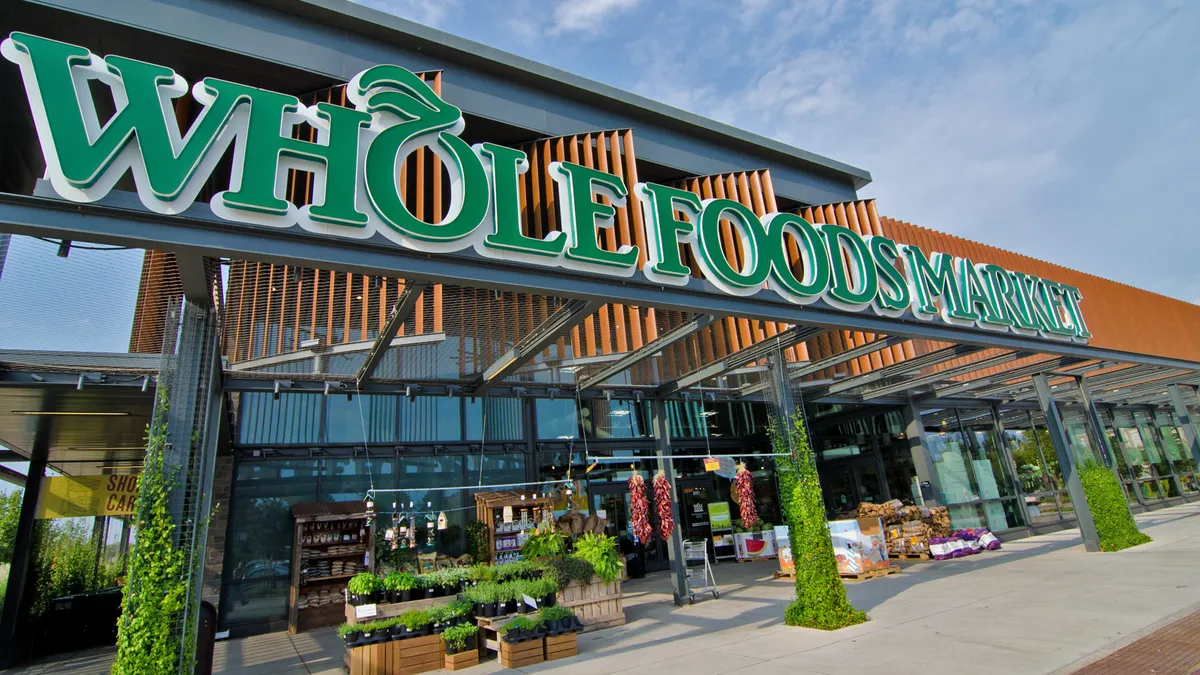Dive Brief:
- Amazon announced late yesterday it will offer Prime members an additional 10% off hundreds of sale items in Whole Foods stores. The grocer will also offer members special deals that update weekly. This week, for instance, Prime shoppers can get half off wild-caught halibut steaks and $2 off organic strawberries.
- The discounts are currently available at all of Whole Foods’ Florida stores, and will roll out nationwide throughout this year. To receive the discounts, Prime members can sign into their Amazon account via the Whole Foods app, then scan a special Prime code at checkout.
- These discounts come in addition to various other perks for Prime members who shop at Whole Foods. Amazon offers 5% off purchases at the grocer through its Prime Rewards credit card. It also offers free two-hour delivery through its Prime Now same-day delivery service, which is currently running in Whole Foods stores in ten cities.
Dive Insight:
It’s becoming increasingly apparent that the true value of Whole Foods for Amazon is the ability to pump up its Prime membership ranks. As CEO Jeff Bezos revealed in his most recent letter to shareholders, the service has more than 100 million members globally.
That’s a lot of consumers that have a deep level of engagement with the company. But Amazon is far from satisfied — it wants even more people to join.
Whole Foods customers could be just the ticket. As The Wall Street Journal points out, Prime sign-ups may be slowing, as analysts believe the service has saturated affluent households in the U.S. However, research from Morgan Stanley found that 38% of Whole Foods shoppers — around 5 million households — aren’t Prime subscribers. At the same time, the investment firm reported that 80% of Prime members — or 38 million consumers — do not shop at Whole Foods stores.
As analysts have pointed out, Whole Foods needs to bring down its prices in order to remain competitive. But Amazon has shown it prefers select discounts that generate a perception of value. Recent studies have shown the companies’ recent price cuts have boosted store traffic without actually bringing down prices overall.
The new Prime discounts should drive even more traffic to stores, and Whole Foods will bank on customers buying not just sale items, but plenty of full-price items, too.
Combined with its evolving online grocery assortment, Amazon and Whole Foods remain as large a threat as ever to the industry. But there have been a few worrying signs, including sourcing changes and cultural clashes.
Before Amazon bought Whole Foods, the grocer began centralizing its buying operations, and now charges merchandising fees, bars brokers from stores and, by many accounts, has put more emphasis on large and scalable brands while eschewing smaller ones. Reports have also stated that the two companies have locked horns over product standards. According to a Yahoo Finance story, Amazon wants Whole Foods to stock Coca-Cola products, while the specialty grocer wants to uphold its natural standards.
Amazon may be able to entice more high-value consumers to shop at Whole Foods. But if it dilutes the retailer’s product standards and assortment, it may not be able to keep them coming back.











